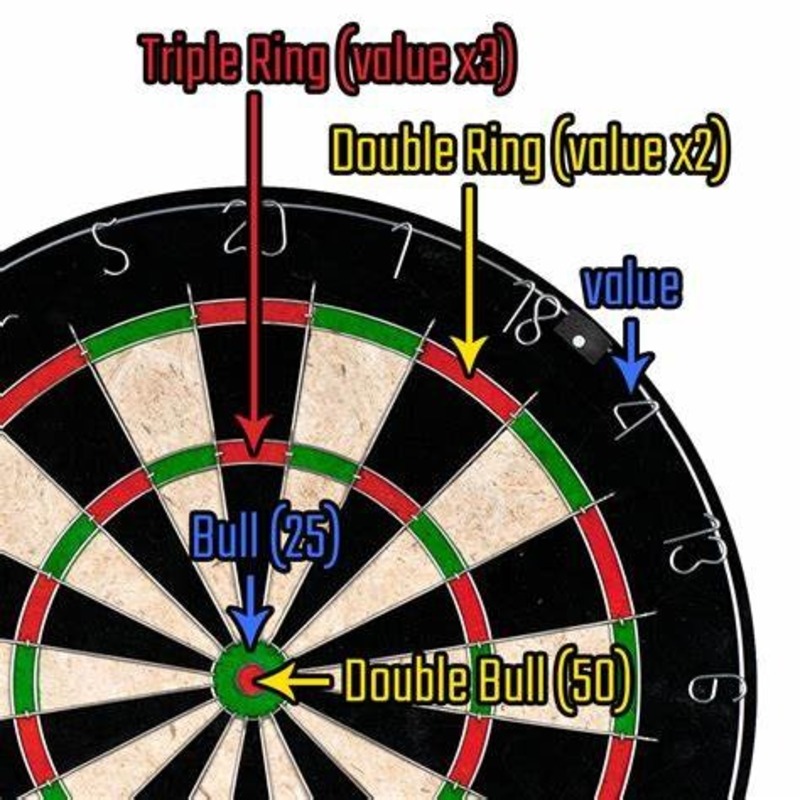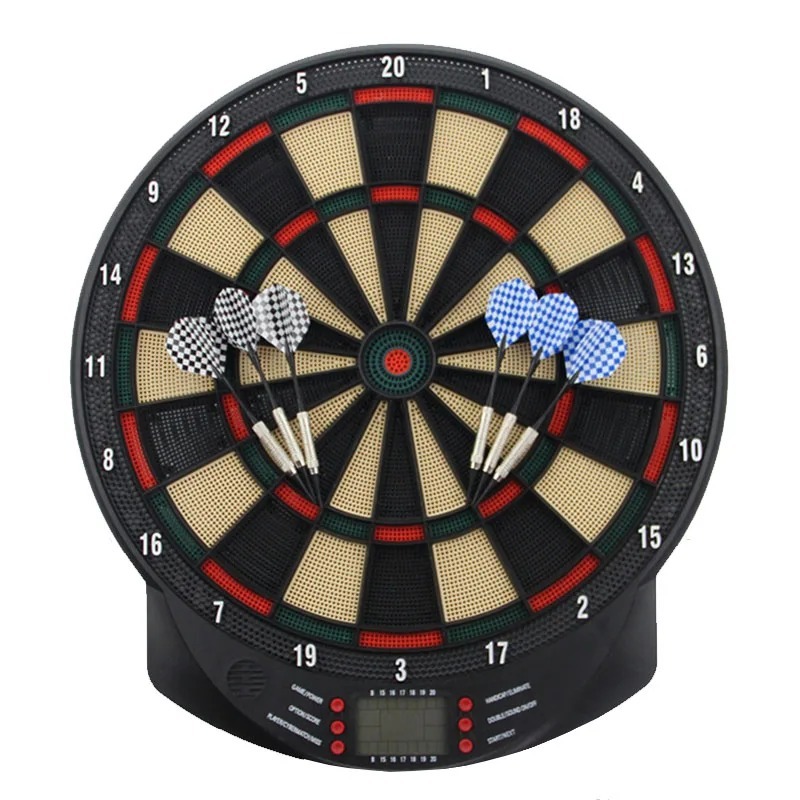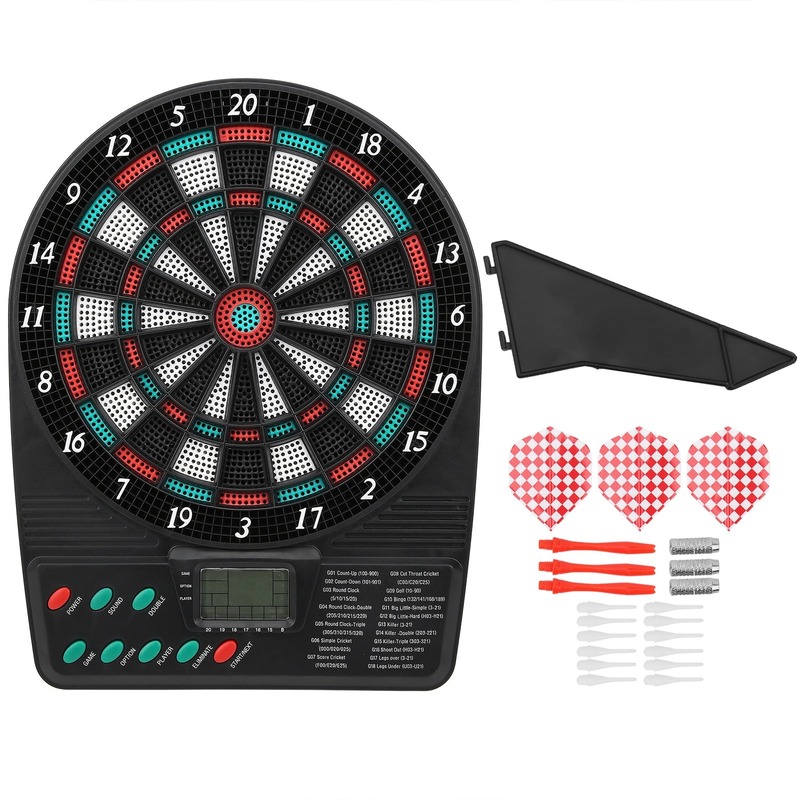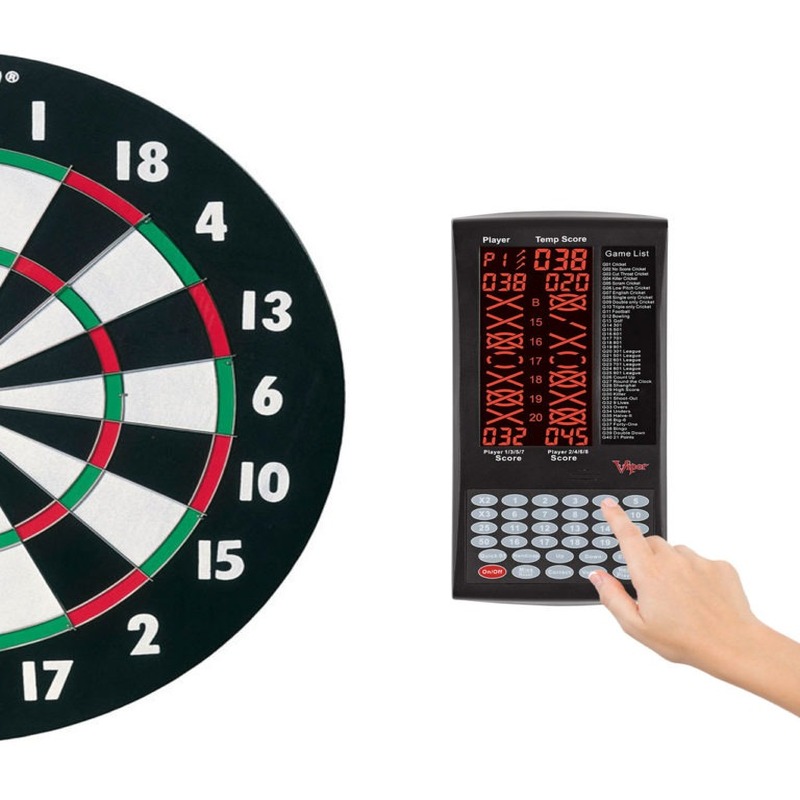Introduction to Darts Scoring
Darts scoring may seem complex at first. Let’s break it down. A dartboard features numbered segments. Hitting different segments scores different points. The outer ring scores double points; the inner, triple. The very center, or bullseye, nets the highest points. Typically, players start with 501 points. The goal is to reduce to exactly zero. Scores subtract from the starting points. This requires strategic play and precision. Understanding how to score darts is key. It affects which segments you aim for to maximize your score reduction efficiently.Learn how to score darts effectively! Discover scoring rules for popular dart games, tips, and how to understand dartboard layout.
The Basics of Dart Board Setup and Scoring Areas
Setting up a dart board properly is crucial for accurate scoring. First, ensure the board is hung securely on a flat wall. The center of the bullseye should be 5 feet 8 inches off the ground, which is the official height. Regarding horizontal placement, the throwing line, also known as the oche, should be 7 feet 9.25 inches from the board.
Dart boards are divided into various scoring areas. Each numbered section from 1 to 20 has three main parts. The thin outermost ring scores double the number’s value, while the thin innermost ring scores triple. The large segment in between these rings counts as a single score of the particular number. Hitting the outer bull scores 25 points, whereas the inner bullseye scores 50 points. Understanding these areas is essential as it helps players strategically aim for required scores to win the game.

Step-by-Step Guide to Scoring a Standard Game of Darts
To master the game of darts, scoring is fundamental. Here’s a concise step-by-step guide to help navigate scoring in a standard game of darts.
- Start with the Basics: Each player begins with a score of 501 points.
- Taking Turns: Players take turns throwing three darts each round.
- Calculating Scores: After each turn, calculate the points scored.
- Hitting a number scores its value.
- Double and triple rings multiply the score by two or three.
- Reducing Totals: Subtract the round’s points from the total score.
- Strategic Aiming: Aim for high-value areas or the doubles and triples to reduce the score quicker.
- Reaching Zero: Keep tracking until one player reaches exactly zero points.
- You must end on a ‘double’ or hit the bullseye for the final dart.
- Avoiding Busts: If your score dips below zero, that turn’s points aren’t counted.
- Winning the Game: The first player to reach exactly zero wins. Any other scoring leads to a continuation of play.
With these simple steps, you’ll be well on your way to understanding how to score darts. Remember to practice these steps to get a better handle on the scoring system.Learn how to score darts effectively! Discover scoring rules for popular dart games, tips, and how to understand dartboard layout.
Common Dart Games and Scoring Techniques
After mastering the basics of how to score darts in a standard game, it’s essential to familiarize yourself with various dart games and their unique scoring systems. Understanding different games can enhance your strategic approach and enjoyment of the sport.
- ’01 Games: This is a series of games like 301 or 501, where you start with a score and aim to reduce it to zero. You must finish with a double or a bullseye.
- Cricket: In Cricket, you need to ‘close out’ numbers 15 through 20 and the bullseye by hitting each three times. Points score only on numbers that are open for you but closed for your opponent.
- Around the Clock: Simple yet challenging, hit every number on the board in sequence, from 1 to 20, to win.
- Killer: Players assign themselves a number and try to ‘kill’ other players by hitting their numbers, while defending their own.
- Halve-It: A more advanced game where certain numbers must be hit in order, and missing a target results in halving your score.
Each game requires varying scoring techniques and strategies. For instance, precision is paramount in ’01 games as you aim for high-value targets to reduce your score quickly. In Cricket, strategic planning and defensive play are crucial as you focus on hitting open numbers and closing out opponents’ numbers. Around the Clock emphasizes consistency, while Killer and Halve-It introduce competitive tactics and add an element of risk with every throw.
By learning these games and their scoring methods, you can significantly improve your dart-playing skills. Regularly practicing various games will also help you become adept at quickly calculating scores and making strategic decisions during play. Remember, every game type can offer new challenges and excitement, broadening your dart playing experience.

Tips for Accurate Dart Throwing and Maximizing Scores
To improve your dart throwing and maximize scores, follow these practical tips. Keep a steady stance with your feet shoulder-width apart. This ensures stability. Grip the dart lightly but with control; a relaxed hand aids precision. Aim by lining up your dominant eye. This increases accuracy.
- Stance is Key: Stand straight, feet firmly planted. A good stance prevents wobbling.
- Grip Matters: Hold the dart comfortably. Avoid tension in the fingers.
- Aligned Aiming: Align the dart with your eye. This helps with direct throws.
- Consistent Throwing Motion: Use the same arm and wrist motion every time. Consistency breeds accuracy.
- Focus on Follow-Through: Propel the dart with a smooth follow-through. It ensures the dart flies straight.
- Visualize Your Target: Picture the dart hitting the intended area. Visualization can improve focus.
Regular practice is essential. It hones these tips into muscle memory, leading to more accurate throws. Remember to keep track of your scores to monitor your progress. Over time, you’ll notice better aim and higher scores. Use these techniques every game, and watch your dart scoring soar.
Electronic vs. Traditional Darts Scoring Systems
In the dynamic world of darts, players can choose between two main types of scoring systems. Here we’ll compare electronic and traditional darts scoring systems, outlining their distinctive features. The choice between them can affect how you play and score.
Electronic Scoring Systems have modernized darts. They display scores automatically as the darts hit the board. This system is user-friendly, especially for beginners. Electronic boards often come with various game modes, making it easy to try new games. They are an excellent choice for casual play and can speed up the game. However, they require batteries or a power source and can be less durable than traditional boards.
On the other hand, Traditional Scoring Systems rely on manual scorekeeping. Typically, a chalkboard or dry erase board is used alongside the dart board. This system is prevalent in professional settings. It promotes mental arithmetic as players must calculate their scores. Traditional scoring holds a nostalgic value and is favored by purists of the sport. It’s also more sustainable, with no need for power besides good old-fashioned brainpower.
To master how to score darts, players must first choose their preferred system. The electronic system may offer ease and accuracy. Yet, the traditional system challenges players to stay sharp and focused. Each system brings its own atmosphere to the game. Whether you’re aiming for laid-back fun or serious play, picking the right scoring method is crucial.
Remember, no matter which system you use, the fundamental principles of darts scoring remain the same. Keep practicing, and you’ll find the precise system that works best for you. Take your time, aim well, and enjoy every throw!

How to Keep Score in Different Dart Games
Keeping score in various dart games can vary greatly, each with its unique set of rules. Let’s explore how to keep score in some of the most popular dart games to ensure you play by the book and enjoy the experience.
- ’01 Games (301, 501, etc.): Start each player with a defined score, often 301 or 501. Players reduce this score by the point value they score each turn. The game ends when a player reaches exactly zero, finishing on a double or bullseye.
- Cricket: This game isn’t about reaching zero. Players aim to ‘close out’ numbers 15 through 20 and the bullseye. You score by hitting each of these numbers three times before your opponent, and you can only score extra points on numbers you have closed but your opponent hasn’t.
- Around the Clock: The goal is simple: hit each number on the board from 1 to 20 in order. There’s no scoring per se, as the first player to hit all numbers wins.
- Killer: Each player is assigned a number which they protect while attempting to ‘kill’ other players by hitting their assigned numbers. If you hit your own number, you score points, but hitting another player’s number can knock them out of the game if done correctly.
- Halve-It: This game focuses on hitting specific numbers in a sequence. If you miss the target number, your score is halved. The game continues until a set number of rounds are completed.
Understanding how to keep score in these games is essential. It helps you strategize and enjoy the game more fully. Always clarify the rules with your opponents before you start, to make sure everyone is on the same page.
Practice Drills to Improve Your Dart Scoring
Improving your dart scoring isn’t just about knowing the rules; it’s about practice. Here are drills that help fine-tune your aim and boost your scoring potential.
- Target Practice: Focus on one segment at a time. Aim for the 20s, then move to 19s, rotating around the board. This builds precision.
- Around the World: Start at 1 and hit each number up to 20. Only move to the next number after a successful hit. It tests consistency.
- 501 Countdown: Start a game of 501 solo. Aim to finish the game in as few rounds as possible. This enhances strategic scoring.
- Doubles and Triples: Spend a session hitting only the double or triple rings. Mastering these can greatly boost your in-game scoring.
- Pressure Practice: Simulate a match-play situation. Pretend you’re on a critical score and need a double to win. This improves focus under pressure.
- Check Out Challenge: Practice finishing from different scores, such as 170, 116, or 87. Learning popular checkouts increases your odds in real games.
Regular practice with these drills will sharpen your skills. Set goals, track progress, and keep challenging yourself. Over time, you’ll notice your scoring ability rise as you become more adept at hitting the right scores at the right time.
